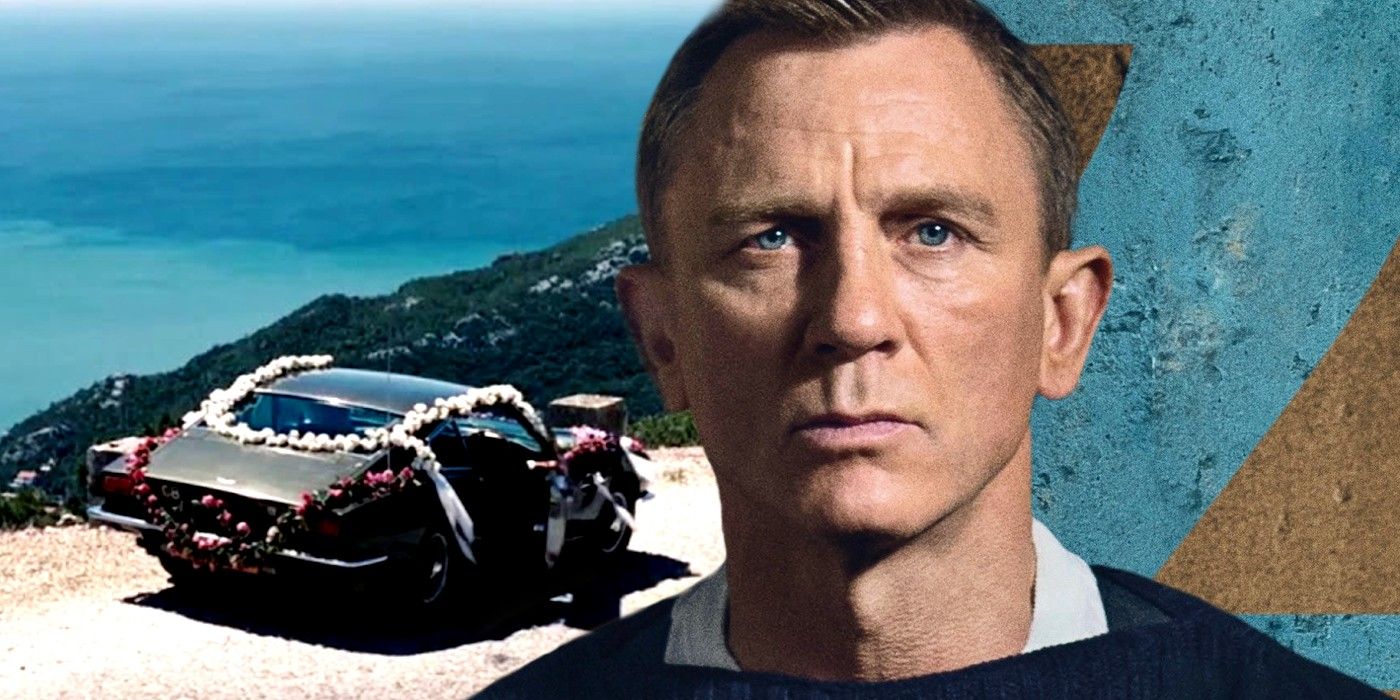
Caution: spoilers ahead for No Time To Die
There's a rather emotive reason Daniel Craig's final James Bond movie, No Time To Die, ends on Louis Armstrong's rendition of "We Have All The Time In The World." Daniel Craig's time as 007 has revolutionized what it means to play James Bond, emboldening the character with updated values, a harder edge, and a more realistic grit. No Time To Die goes several steps further, not only introducing Mathilde, the daughter of James Bond and Madeleine Swann, but actually killing off Craig's character in the final act, with the spy heroically sacrificing himself to prevent Safin's diabolical launch.
Theme songs are, of course, intrinsic to any James Bond release, and movie fans eagerly await which artist gets the honor each time. It's a unique tradition that hasn't quite caught on with other long-running franchises (apparently, being chosen for a Fast & Furious theme doesn't carry the same prestige). For No Time To Die, Billie Eilish delivers the eerily stirring title track... but that's not what plays when the final credits roll. Instead, the audience is treated to a 1969 Louis Armstrong classic - "We Have All The Time In The World."
Armstrong's "We Have All The Time In The World" is already a Bond theme, written for On Her Majesty's Secret Service, George Lazenby's one and only performance as 007. A more introspective story than fans were used to from Sean Connery, Lazenby's Bond meets Tracy di Vicenzo (played by Diana Rigg), but rather than conforming to the usual one-night-stand trope, James and Tracy get married in the film's climax. The newlyweds drive away happily, with Bond intending to leave his life of danger behind, but as they stop by the roadside, Blofeld drives past and guns down Tracy, leaving Lazenby crying over her body. The grieving Bond tells a passing police officer, "there's no hurry, you see, we have all the time in the world" as a slowed-down, orchestral rendition of Armstrong's opening number plays in the background.

Both Lazenby's closing line and Armstrong's tune are intended as tragically ironic. Bond and Tracy were expecting a life of happiness together - the metaphorical "all the time in the world." Instead, Tracy dies on the eve of this new adventure, freezing their romance in a single moment of time. Bond now has all the time in the world to mourn what could've been. He doesn't, obviously, he gets right under someone else in the very next film, but the intention was there nonetheless.
When James Bond 25's title was officially announced as "No Time To Die," fans immediately pointed out the comparison to On Her Majesty's Secret Service. Ultimately, those parallels proved even more apt than suspected. Just like George Lazenby, Daniel Craig's James Bond is promised a better life in No Time To Die, discovering that Madeleine Swann was faithful all along, and that the couple have a young daughter. Bond professes his love for Madeleine and the promise of family life beckons. Also like Lazenby, however, that joy is cruelly snatched away by a villain. Safin's nanobots ensure James can never touch his lover or daughter again, and Bond is forced to give his life to save the world.
"We Have All The Time In The World" conjures images of the last time Bond came this close to a normal life, and proves the character is destined to either serve his country or die trying. In No Time To Die, however, the roles are reversed; Madeleine and Mathilde have the rest of their lives to remember James, while time is frozen for 007 himself, who spends his last remaining seconds before being bathed in a volley of naval rockets imagining the loving home environment he could've had.
from ScreenRant - Feed https://ift.tt/3AsM470



0 Comments